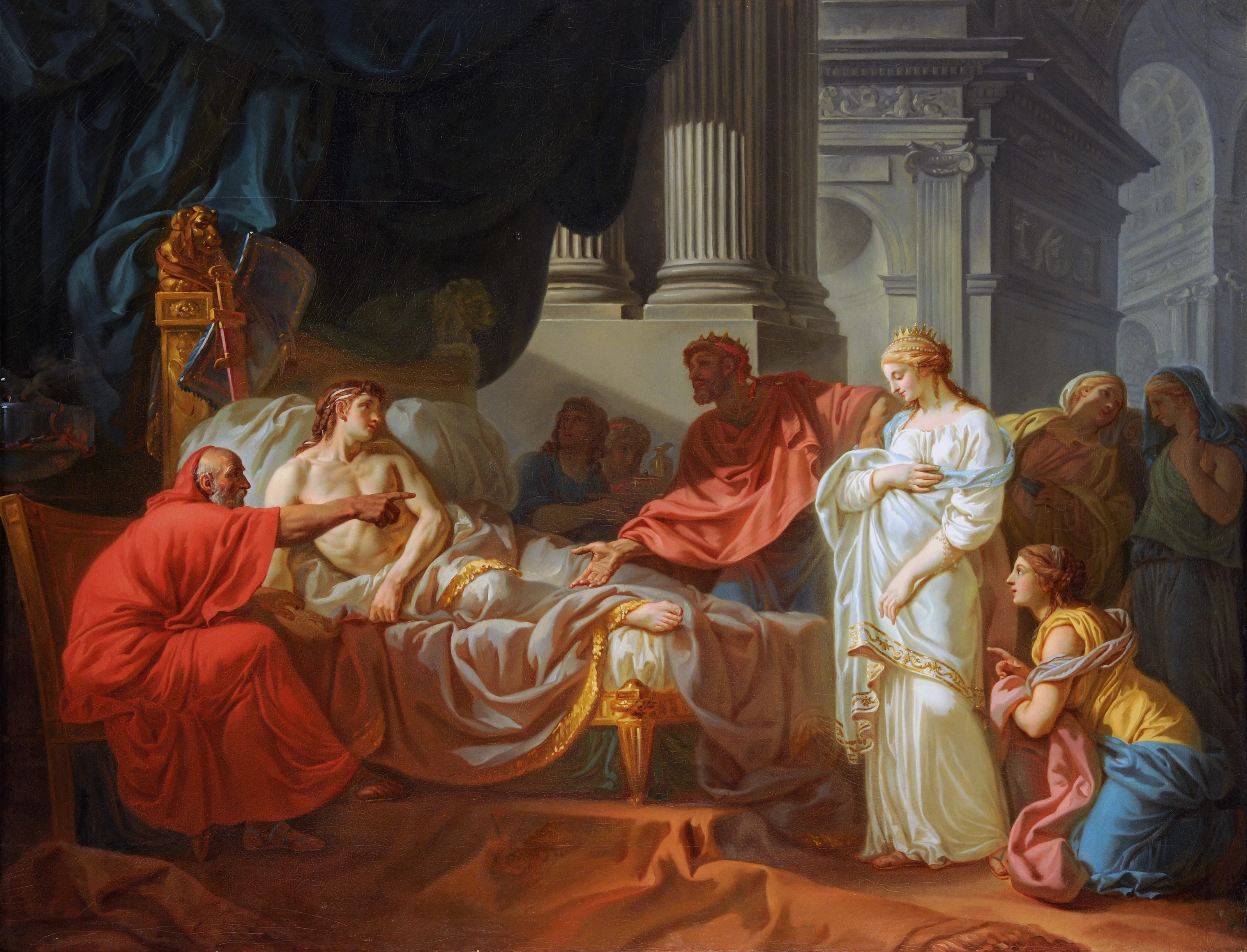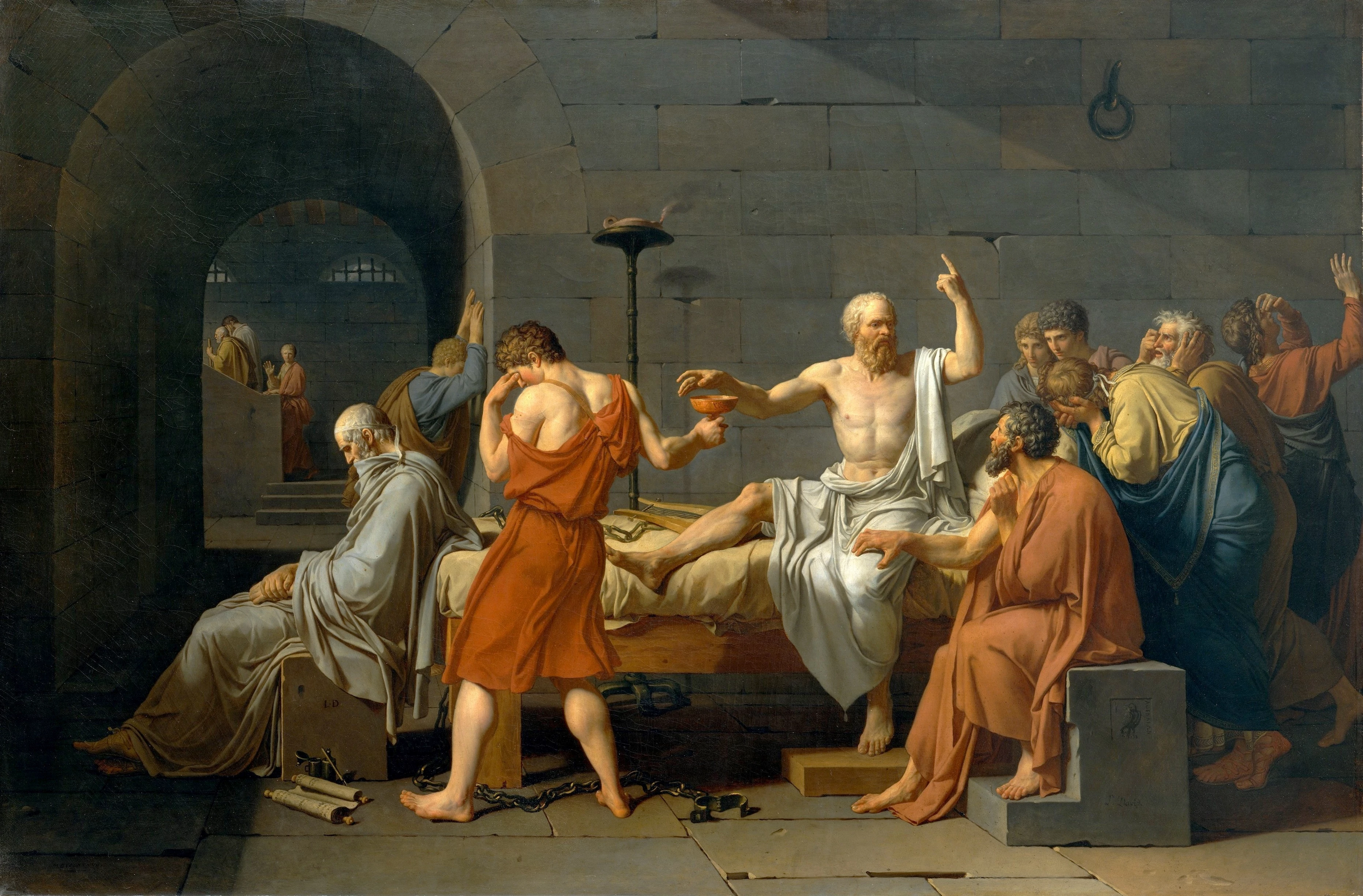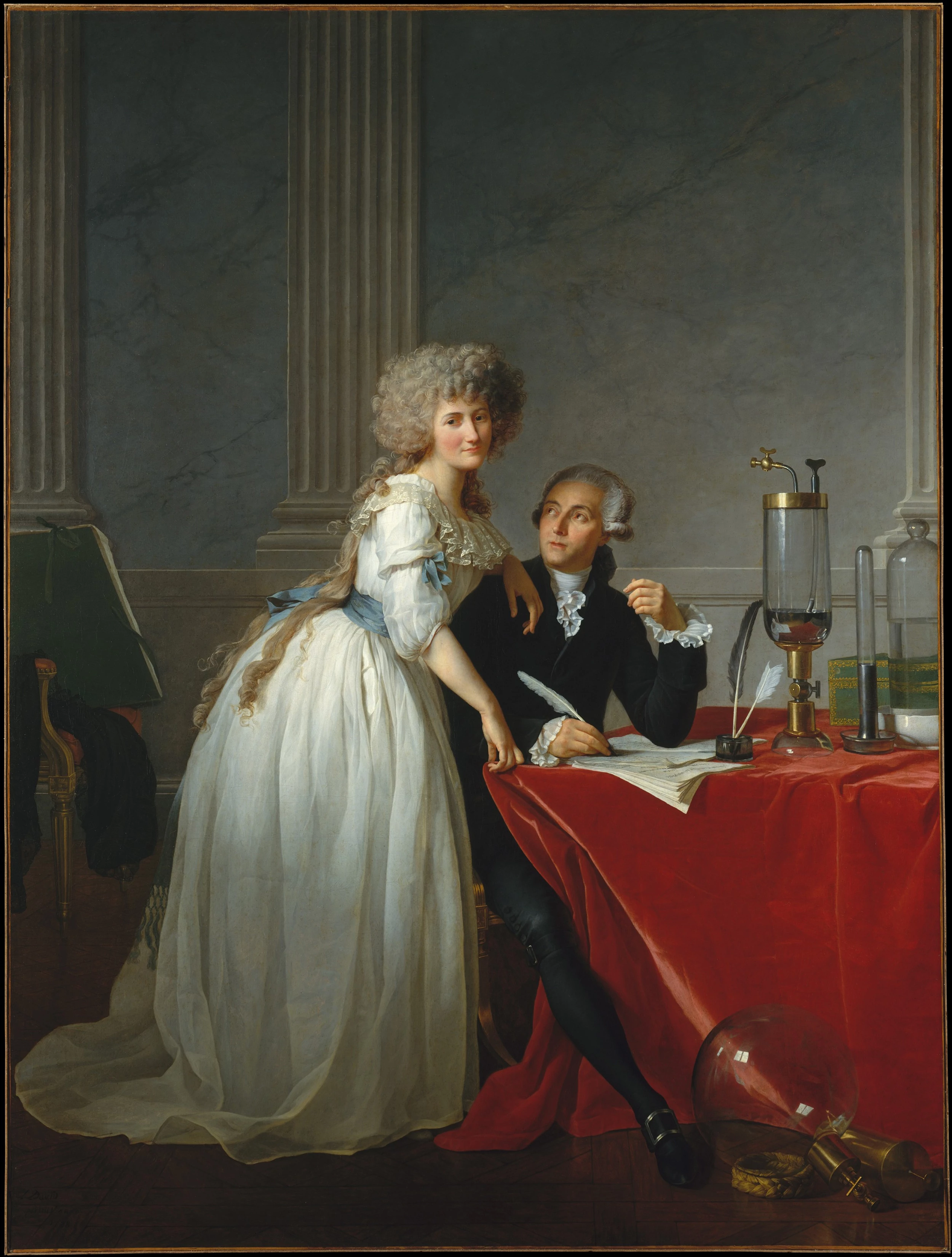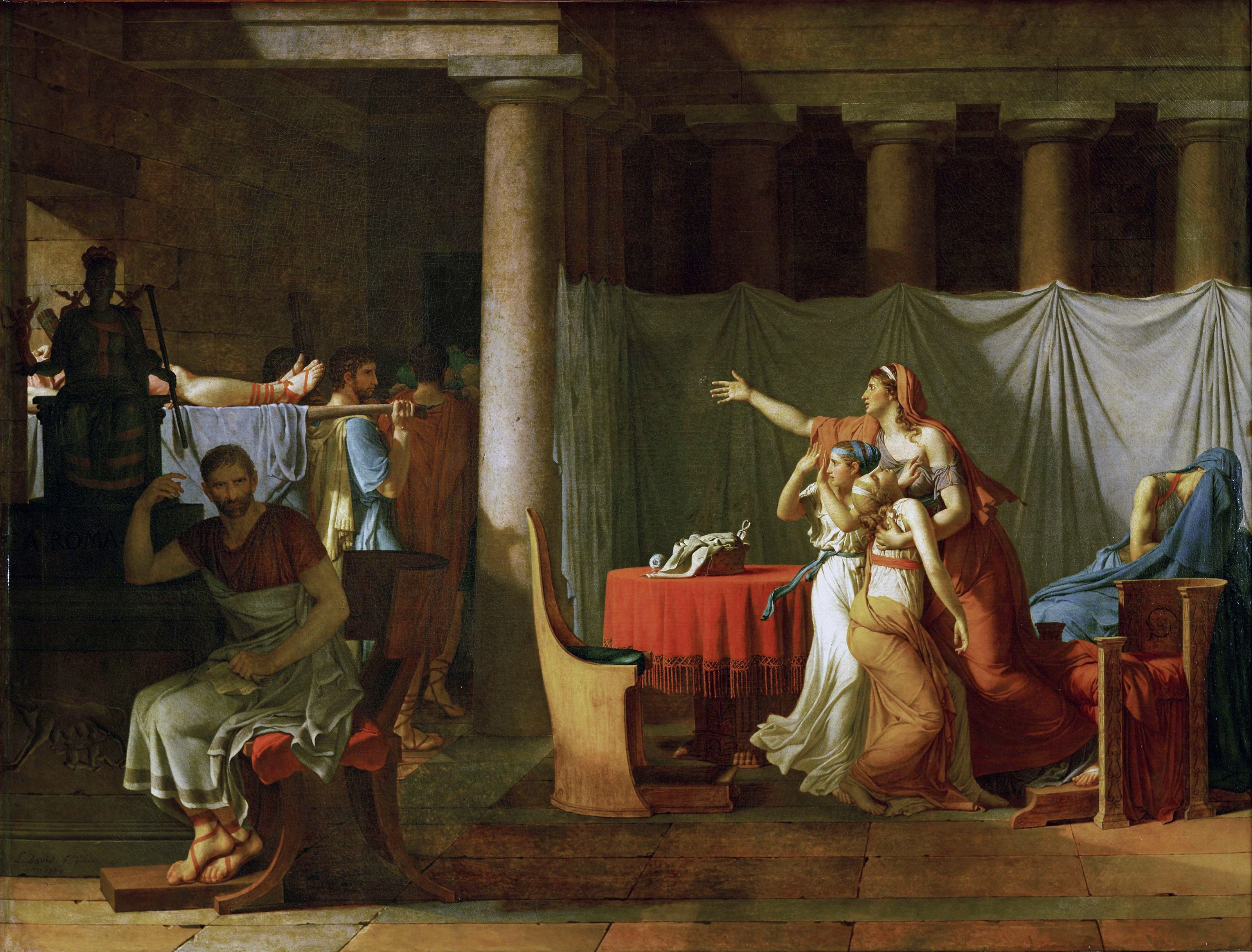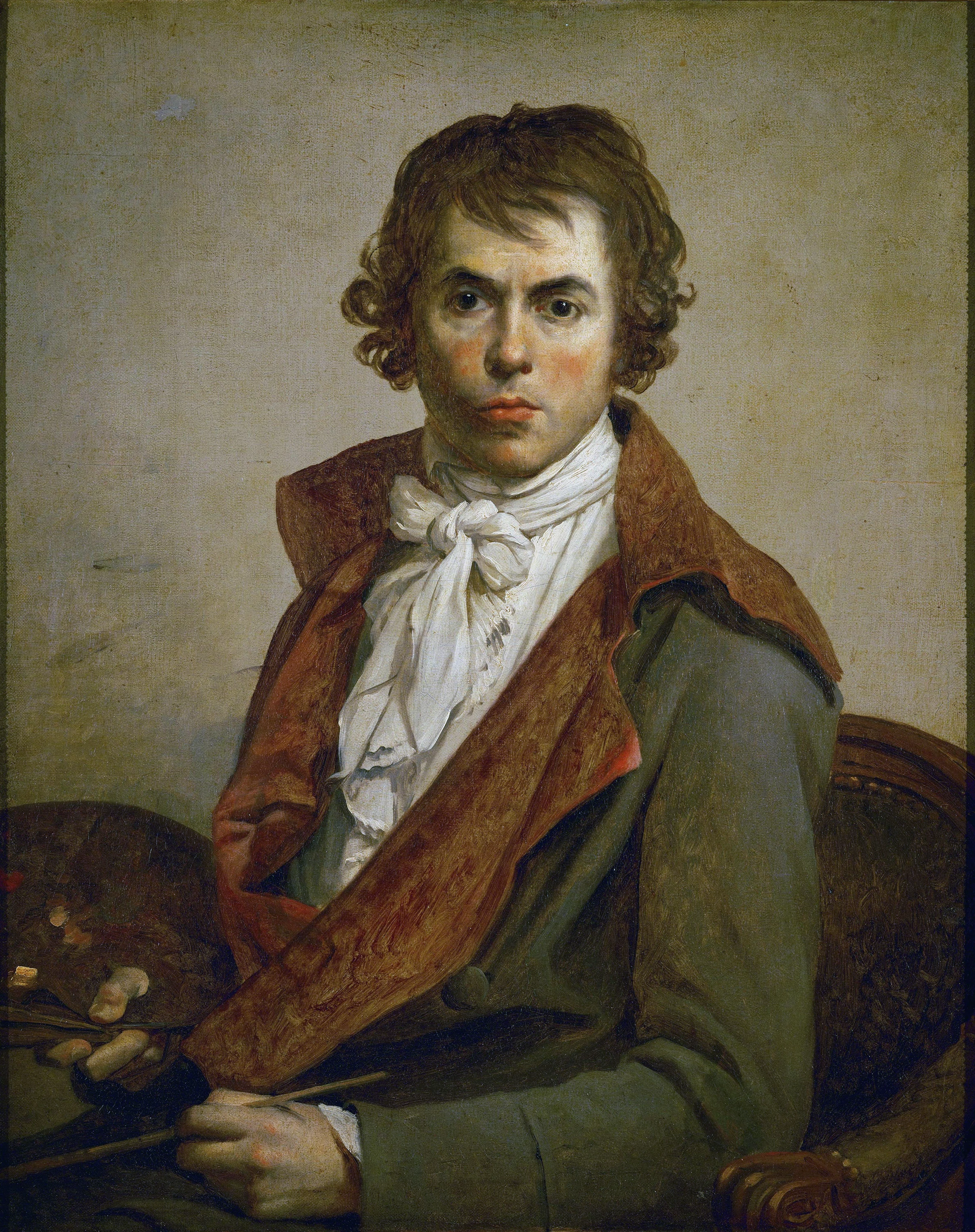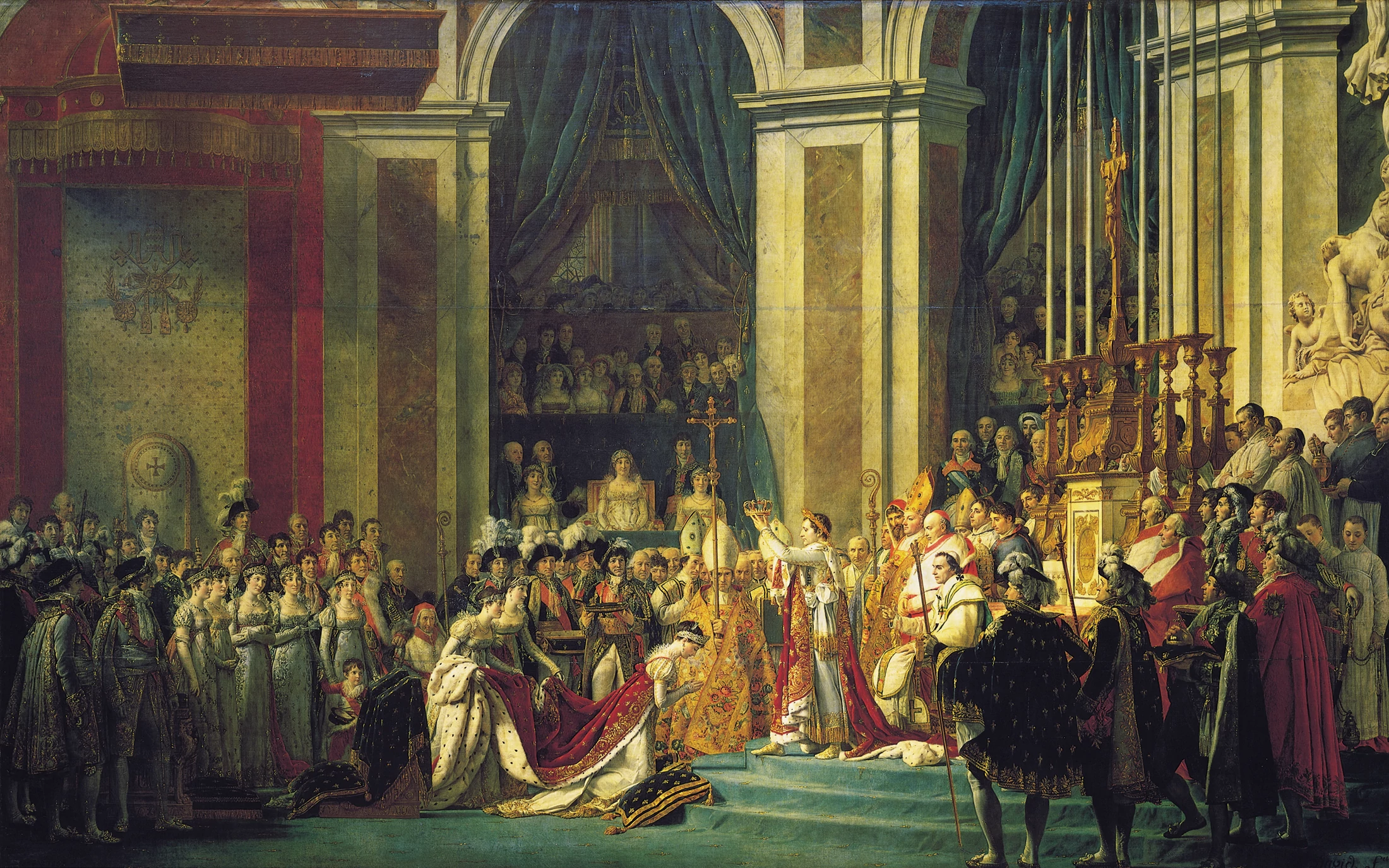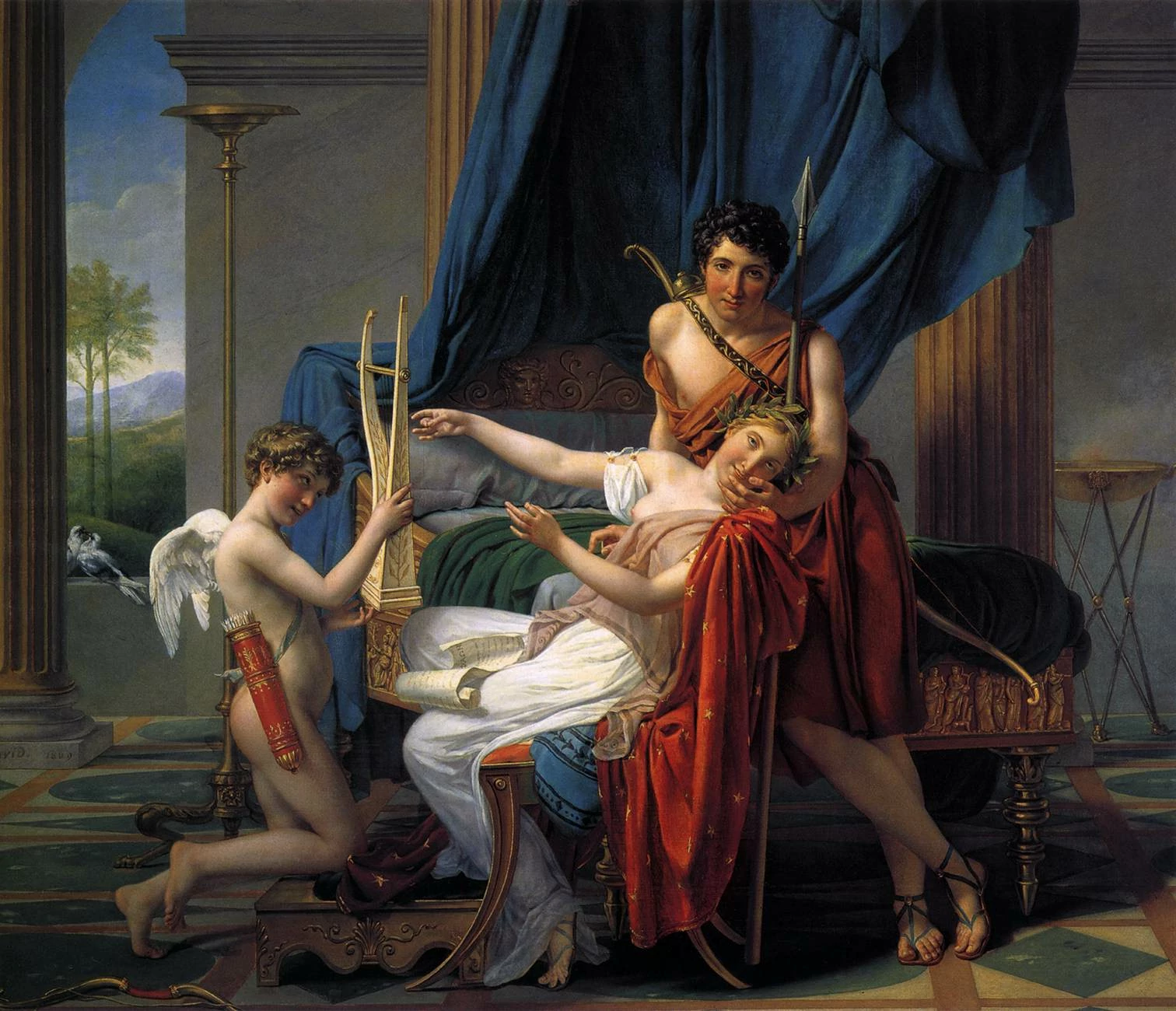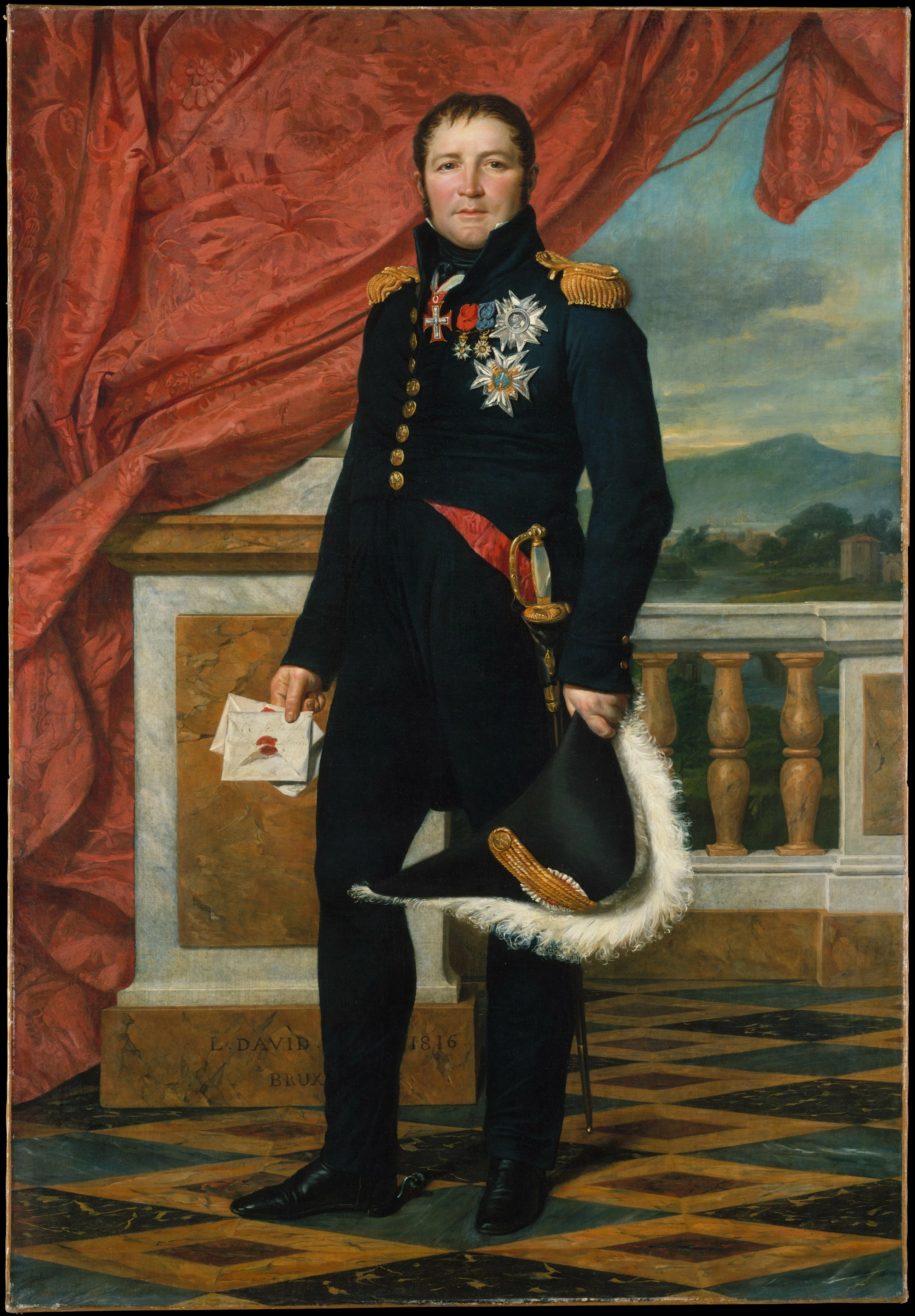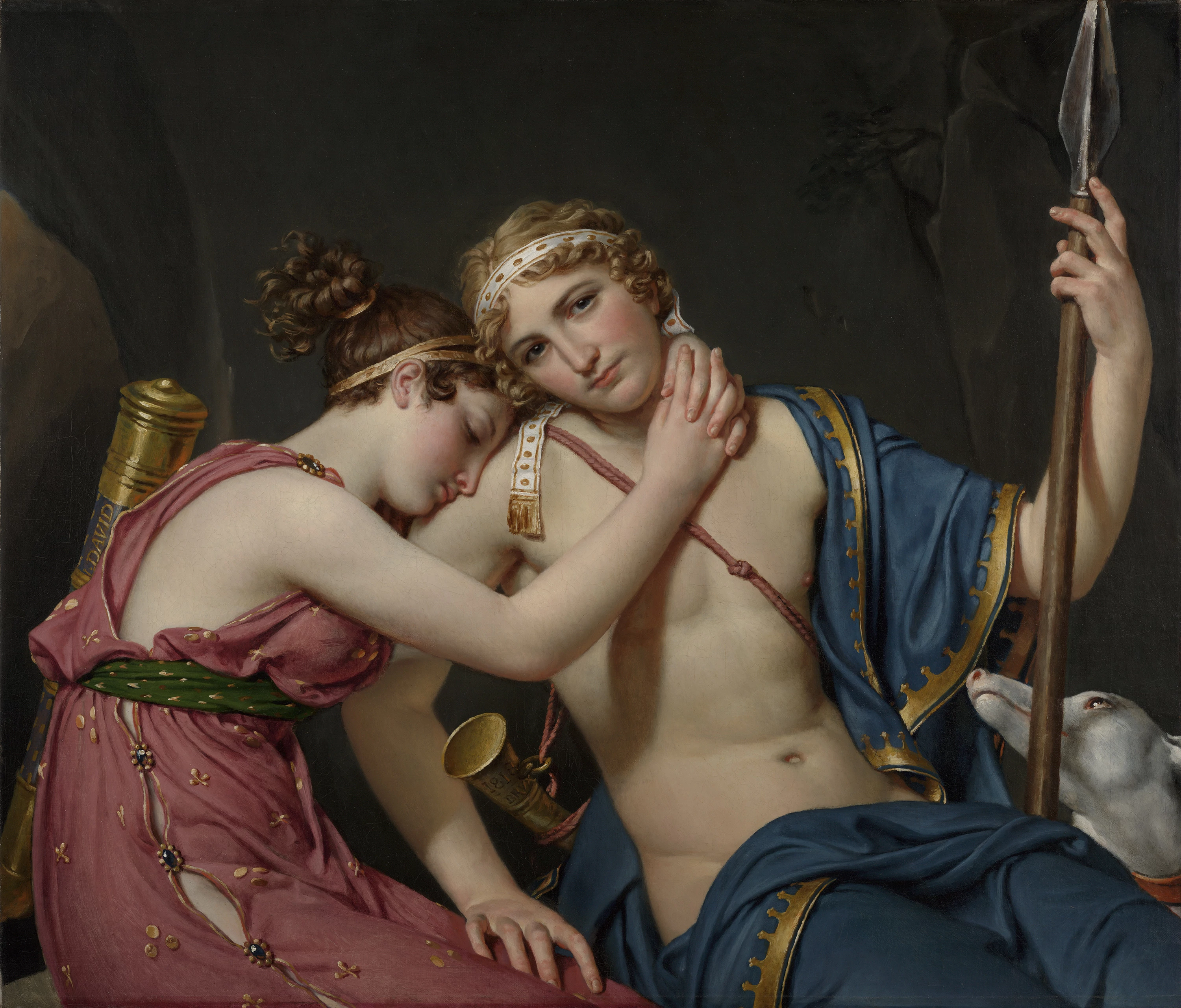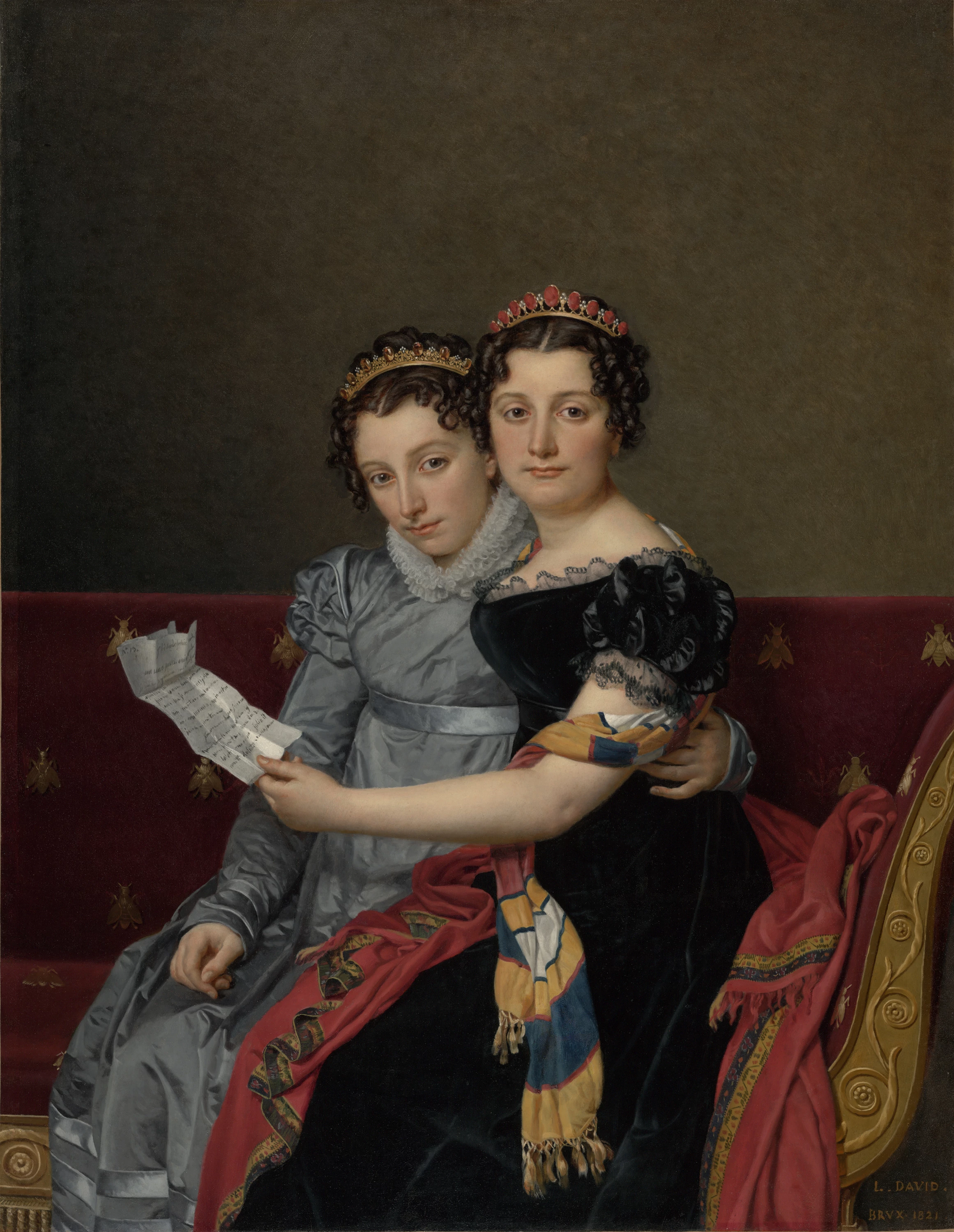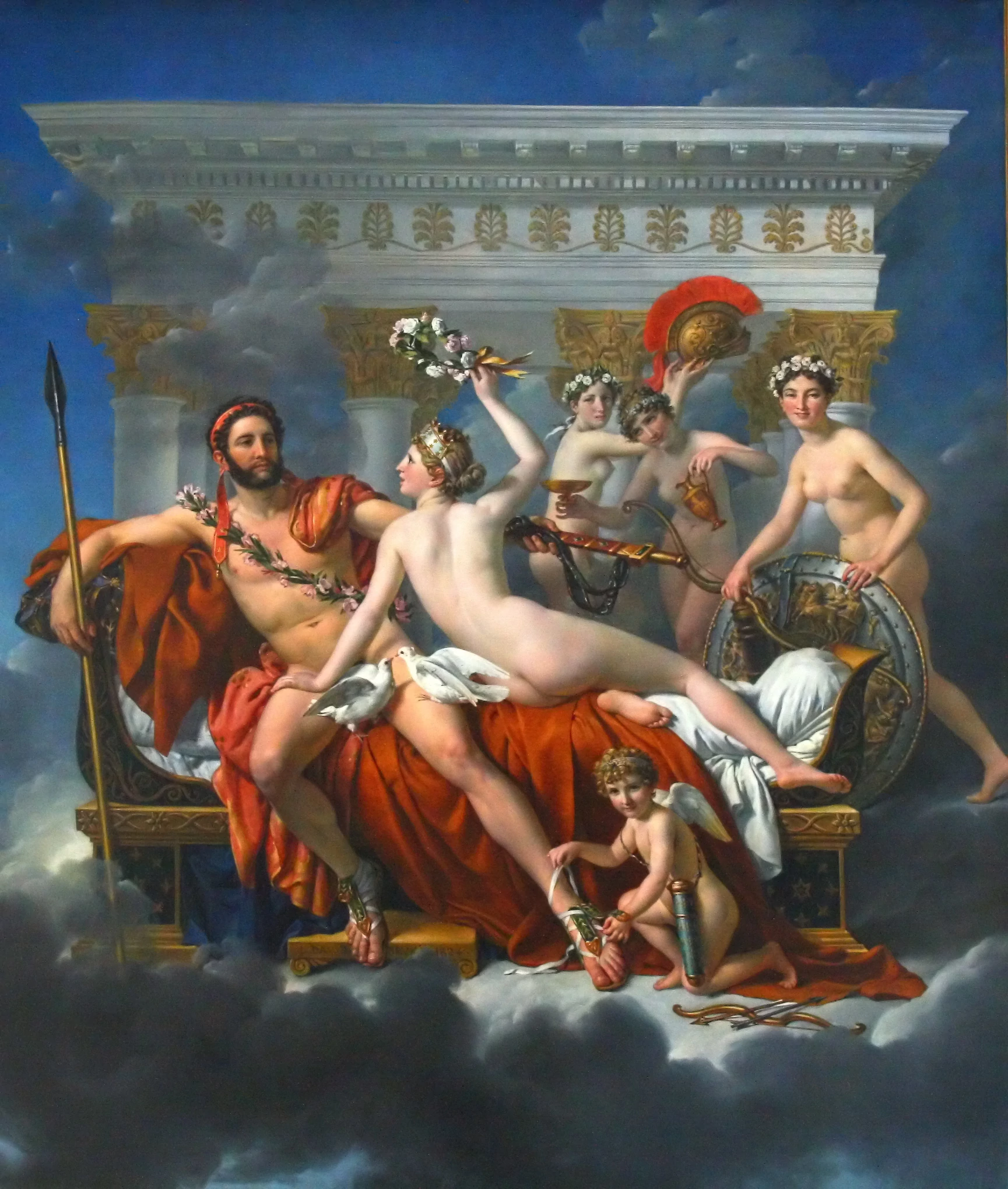Jacques-Louis David
Virtuoso painter, political chameleon, complete jerk
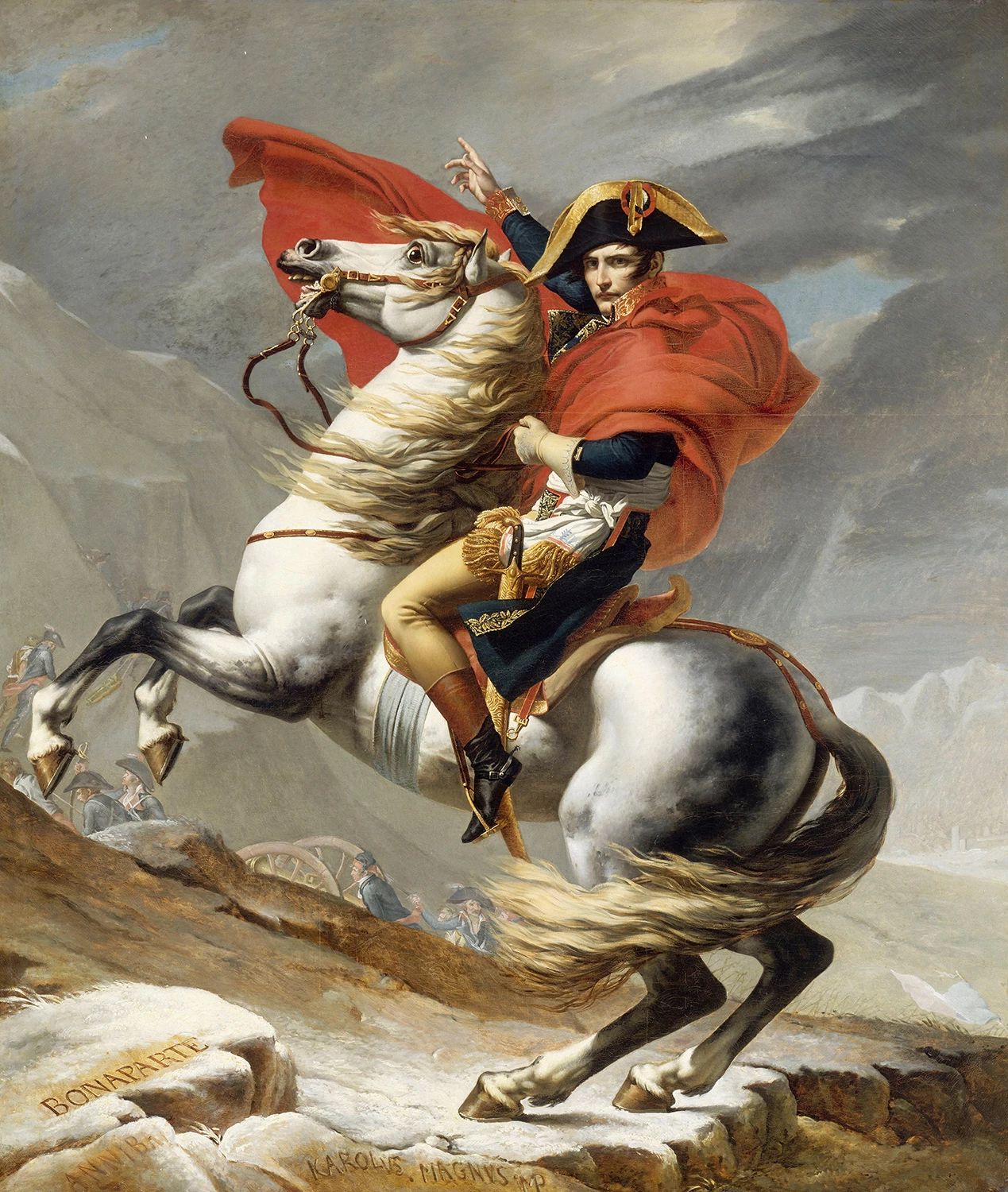
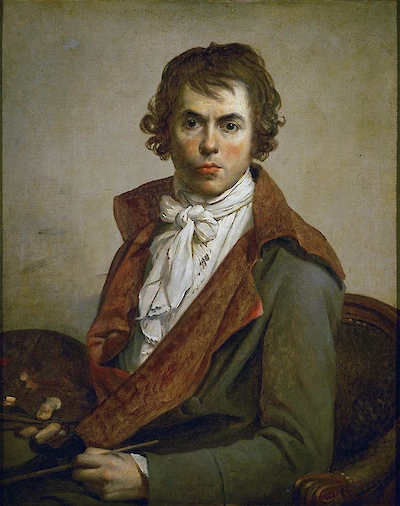


Jacques-Louis David was a survivor, an ill-tempered chameleon whose mesmerizing colors saved him from prison, earned him a title from an emperor, and lived on through his devoted students and followers.
David was raised by his wealthy uncles after his father was killed in a duel. A stubborn child with a speech impediment and a love of drawing, he was lucky to receive one of history’s best educations in art.
One of David’s distant relatives happened to be François Boucher, one of the era’s most sought-after painters, and for a time, David’s tutor. Later, Boucher sent David to learn from Joseph-Marie Vien, another preeminent Rococo artist. Finally, David attended the Royal Academy at the Louvre, where he painted to compete for the Prix de Rome, a scholarship that sent the single most promising student each year to Rome to study ancient classics and the Renaissance masters. He failed three times to win the Prix, throwing tantrums and threatening suicide with each loss. Finally, at 26 years old, David won the Prix with his painting Erasistratus Discovering the Cause of Antiochus’ Disease.
Rome introduced David to Raphael Mengs and the full weight of academic expectation. In 1779, he had the opportunity to tour the recently excavated ruins of Pompeii. On his return to Paris in 1780, his authoritative brush and his connections from Rome earned him a coveted place as a member of the Royal Academy. The King himself granted David the right to live in the Louvre, take government commissions and teach up to 50 students. His work at this time shows the profound influence of his classical training in Rome, and bold imaginings of history in works like the Oath of the Horatii and The Death of Socrates.
But violence was brewing in Paris—tension that soon exploded into the French Revolution. David had become friends with Maximilien Robespierre at the Jacobin Club, where dissenting thought fermented. David’s work swung to support the new nationalists, with the monumental work The Lictors Bring to Brutus the Bodies of His Sons honoring Lucious Junius Brutus, the famous Roman revolutionary. This work was a clear declaration of revolutionary support, and was removed from display by the French royals. But David had played his cards well, and became a leader of the revolution alongside Robespierre. David voted in the National Convention to execute King Louis XVI, was named dictator of the arts under the French Republic, and commemorated the formative moment of the revolution in “The Oath of the Tennis Court”.
After Robespierre’s fall from power, David was imprisoned twice, where he developed a new “Grecian Style” of painting for “The Intervention of the Sabine Women” that called for peace in France. The statuesque forms caught the attention of Napoleon Bonaparte, who inducted David into his propaganda machine. At 56 years old, David became the “First Painter to the Emperor” and refined his Empire Style, a palette of warm Venetian color and polished surfaces. He painted the highlights of Napoleon’s reign, including the Emperor’s coronation and victory at the Battle of Marengo.
One final time, a power shift in France forced David to pivot. With the restoration of the Bourbon dynasty, King Louis XVIII generously overlooked David’s vote to execute his predecessor, and offered David the role of court painter. But the strain of politics was too much, and David chose exile, settling into a quiet life in Brussels. In solitude, he painted his magnum opus: Mars being Disarmed by Venus and the Three Graces, which drew his former students from far and wide. David died just a year later in a carriage accident. While his body buried in Brussels, his heart was returned to Paris and buried in the Pere Lachaise Cemetery.
...
Got questions, comments or corrections about Jacques-Louis David? Join the conversation in our Discord, and if you enjoy content like this, consider becoming a member for exclusive essays, downloadables, and discounts in the Obelisk Store.

